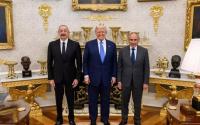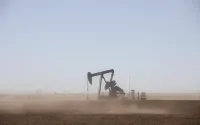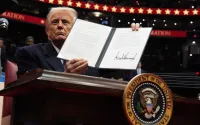14 November 2007Yahoo! NewsGeorge Jahn
Iran has met a key demand of the U.N. nuclear agency, handing over long-sought blueprints showing how to mold uranium metal into the shape of warheads, diplomats said Tuesday.
Iran's decision to release the documents, which were seen by U.N. inspectors two years ago, was seen as a concession designed to head off the threat of new U.N. sanctions.
But the diplomats said Tehran has failed to meet other requests made by the International Atomic Energy Agency in its attempts to end nearly two decades of nuclear secrecy on the part of Iran.
The diplomats spoke to The Associated Press as IAEA chief Mohamed ElBaradei put the finishing touches on his latest report to his agency's 35-nation board of governors for consideration next week. While ElBaradei is expected to say that Iran has improved its cooperation with his agency's probe, the findings are unlikely to deter the United States, France and Britain from pushing for a third set of U.N. sanctions.
The agency has been seeking possession of the blueprints since 2005, when it stumbled upon them among a batch of other documents during its examination of suspect Iranian nuclear activities. While agency inspectors had been allowed to examine them in the country, Tehran had up to now refused to let the IAEA have a copy for closer perusal.
Diplomats accredited to the agency, who spoke on condition of anonymity because they were divulging confidential information, said the drawings were hand-carried by Mohammad Saeedi, deputy director of Iran's Atomic Energy Organization and handed over last week in Vienna to Oli Heinonen, an ElBaradei deputy in charge of the Iran investigations.
Iran maintains it was given the papers without asking for them during its black market purchases of nuclear equipment decades ago that now serve as the backbone of its program to enrich uranium — a process that can generate both power or create the fissile core of nuclear warheads. Iran's refusal to suspend enrichment has been the main trigger for both existing U.N. sanctions and the threat of new ones.
Both the IAEA and other experts have categorized the instructions outlined in the blueprints as having no value outside of a nuclear weapons program.
While ElBaradei's report is likely to mention the Iranian concession on the drawings and other progress made in clearing up ambiguities in Iran's nuclear activities, it was unclear whether it would also detail examples of what the diplomats said were continued Iranian stonewalling.
Senior IAEA officials were refused interviews with at least two top Iranian nuclear officials suspected of possible involvement in a weapons program, they said. One was the leader of a physics laboratory at Lavizan, outside Tehran, which was razed before the agency had a chance to investigate activities there. The other was in charge of developing Iran's centrifuges, used to enrich uranium.






